Marketing ideas using Augmented Reality in Retail Sector
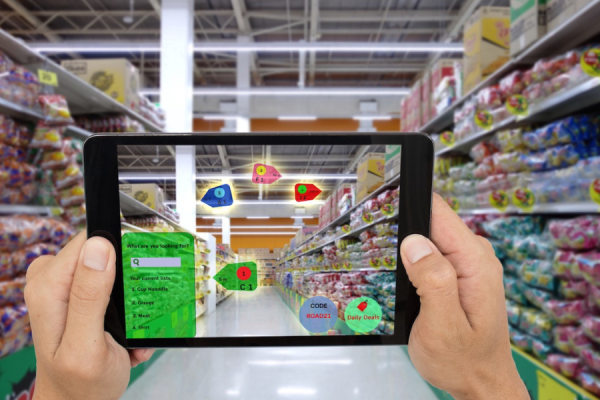

1 . Introduction
With thousands of brands targeting a plethora of different consumers, augmented reality has proved to be a boon especially in this era of ever growing competition. With various multi-million dollar brands using augmented reality to lure in customers, what once sounded like a sci-fi movie has now become a reality in the retail sector. From trying on glasses to wearing your favorite pair of sneakers, augmented reality has made all of that and more possible without having the customer to leave the four walls of their homes.2. What is augmented reality?
In layman terms, augmented reality can be elucidated as the amalgamation of digital data with the real world environment of the user to provide a more realistic experience. Through this, the software using augmented reality changes the natural environment of a consumer by overlaying electronically generated content over it. This blend of digital content in a three-dimensional space takes the customer experience to a whole new level and facilitates better decision making. Augmented reality marketing can be taken as a powerful tool towards developing an enhanced marketing strategy which allows the customers to develop a personal relationship with the brand. This form of technology coupled with a plethora of marketing ventures could highly improve the efficiency and returns on marketing investments. Augmented Reality enables consumers to learn more about a certain product or service with a touch of immersiveness. Brands use augmented reality as a leverage in their marketing strategies which is the need of the hour in this competitive era. With the help of augmented reality, deploying methods of experimental marketing has become much easier and cost efficient. With the merger of audio-visual and sensory experiences, brands have developed such practices that involve all senses of the consumer thereby building a better fondness their minds towards the brand. Augmented reality in true sense has opened new doors especially when it comes to personalization in products or services. Giving a beforehand hand experience to the customer before they make a purchase helps them in better decision making along with instilling an affection towards the brand.3. Examples for augmented reality marketing in retail sector
1. IKEA:
Ikea as a world leading furniture brand, is known for its ginormous stores located across various countries. However, in these modern times where the Internet drives the world, Ikea too has placed its bet on online marketing strategies using Augmented Reality. With its IOS application Ikea Place, Ikea is now using augmented reality to market more than 2,000 products under its arsenal. The application allows the customer to take a preview of how the furniture would look in their homes. Using Apple’s advanced ARKit tech software, Ikea allows its consumers to view how a furniture would fit in their surroundings.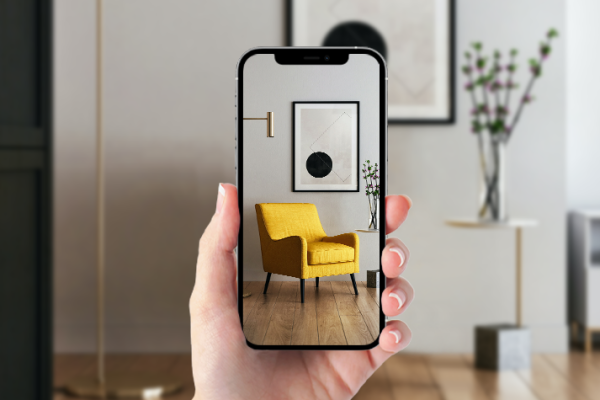

By using Augmented Reality, Ikea Place allows the customer to try products from different viewing angles to get a thorough look before placing an order. With thousands of products to choose from, Ikea is providing a major chunk of its small and medium sized furniture to be displayed through Ikea Place.
Through Ikea place, the brand promotes and facilitates better buying decisions for its shoppers.
Due to its inability to adapt to the changing realms of the market, Ikea had a struggling phase especially when it came to digital marketing. With the help of augmented reality, Ikea has now enabled its customers to see how a furniture would look like in their living spaces. Moreover, this even saved the people from the three hour trip to and fro the Ikea store which is mostly located on the outskirts of big cities.
2.Nike:
While celebrating its 50th anniversary, Nike displayed a blend of its past and the future in honor of this milestone. The company provided a web augmented reality experience at 11 selected stores across the globe, including the ones in New York and Paris. For this venture, Nike partnered with a global tech company Buck, in order to promote its DNA – Department of Nike Archives.
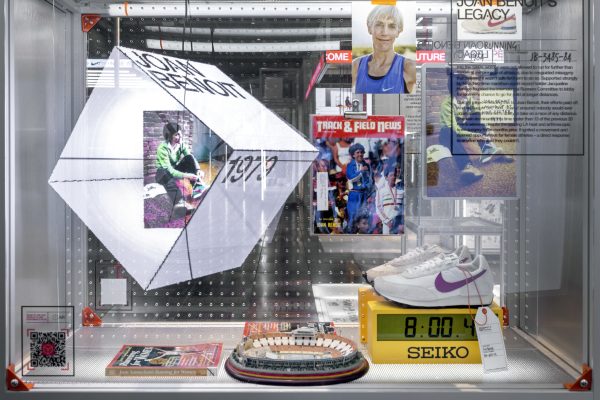

Besides this campaign, Nike has experimented with augmented reality to promote its footwear. The Nike Fit app helps customers find the most appropriate shoe sizes for them. This app allows consumers to check the most fitting sizes without having to enter the store, making shoe shopping with the brand even more effortless. Customers can know their shoe size on the Nike Fit app beforehand, eliminating the hassle of trying various sizes to get the best fit. They can then easily select their favorite designs and make a purchase.
3. Converse:
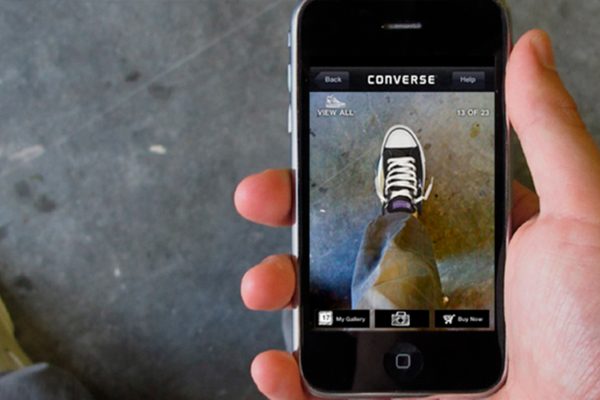

Lacoste:
The French fashion brand launched its new branch of streetwear called Lacoste Tasked Engine Creative. The LCST is a global augmented reality campaign introduced by the brand with the title tag of “Bring the color”. With the latest version of its mobile application, Lacoste aims to promote the LCST augmented Reality campaign which enables the user to dive into the colorful virtual world of Lacoste Tasked Engine Creative.


Moreover, Lacoste stores are equipped with promotional postcards that direct viewers to an exclusive 3D Animation.
Warby Parker:
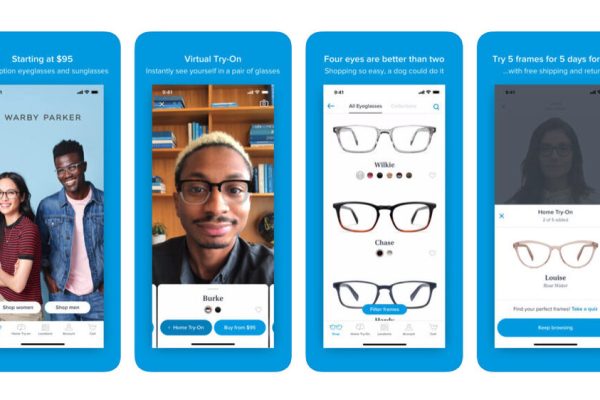

6. WatchBox:
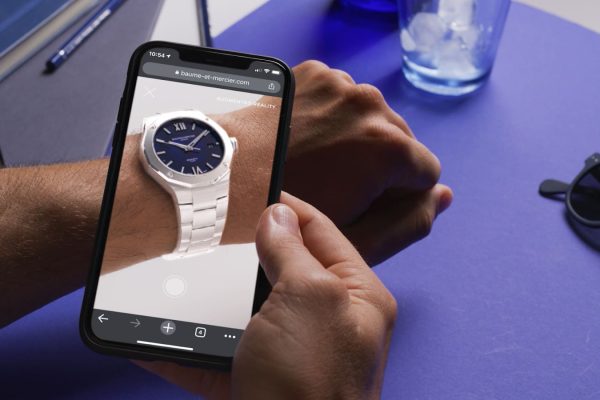

Pre-owned luxury watch brand WatchBox has made its move by investing in augmented reality for its e-commerce platform. Through this venture, WatchBox aims to make it easier for customers to invest in a purchase by virtually trying the watches.
Through its AR-based platform, WatchBox offers virtual trials of ultra-luxurious brands like Audemars and Tag Heuer. Besides providing try-ons for watches available in stock, the application allows viewers to examine and take an exclusive preview of upcoming stock not yet available in stores.
With new technical advancements in place, WatchBox promises customers a personalized experience along with expert assistance and utmost convenience while shopping. The brand takes augmented reality and related technology seriously, investing heavily in developing and harnessing digital tools to provide an enriched experience.
7. FaceCake:


One of the most prominent features of FaceCake’s Infinite Virtual Closet is its diversified clothing sources. The app features a long list of apparel, including clothing, eyewear, jewelry, accessories like shoes, cosmetics, and leather wear. The application allows users to draw inspiration from their fashion idols and style themselves accordingly.
FaceCake Virtual Dressing Room is a patented shopping application that uses augmented reality along with artificial intelligence. This combination allows customers to try clothes and apparels directly over their own images. The application offers incredible personalization by recommending relevant products based on customer preferences. The technology is made platform-independent, making it more accessible. The unique blend of augmented reality with artificial intelligence makes it a one-of-a-kind application.
8. Apple - AR Product Viewing Experience:
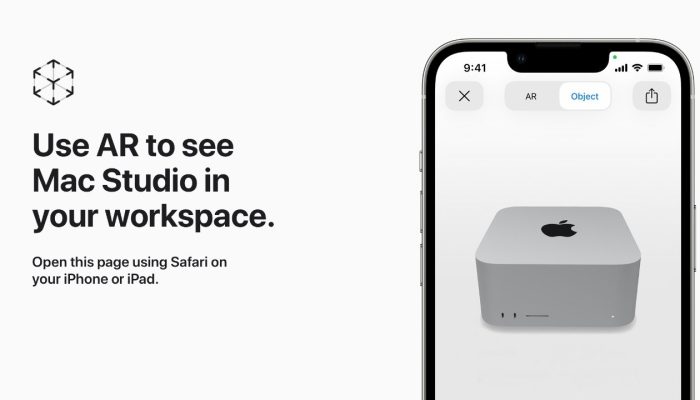

Tech giant Apple has unveiled its product preview application which uses augmented reality to showcase products like the HomePod mini and the iPhone series from 12 to the latest 14 Pro Max.
This is not the first from Apple, but this newer version of Apple’s augmented reality platform allows viewers to place Apple products on their tabletops virtually. Using Apple’s ARKit, customers can even take a look at the products using 3D augmented reality in an empty space.
The steps required to use Apple’s virtual product viewer are quite simple. Being iOS exclusive, users need to open Safari using their iPhone. After that, they have to look for the desired product and head to the bottom-most section of the page. They can click on the ‘set’ button to place the product in the desired location. Using the ‘object’ mode, users can view a series of 3D-rendered images of various Apple products. The program even allows pinch zoom-in and rotate options.
9. Zara:
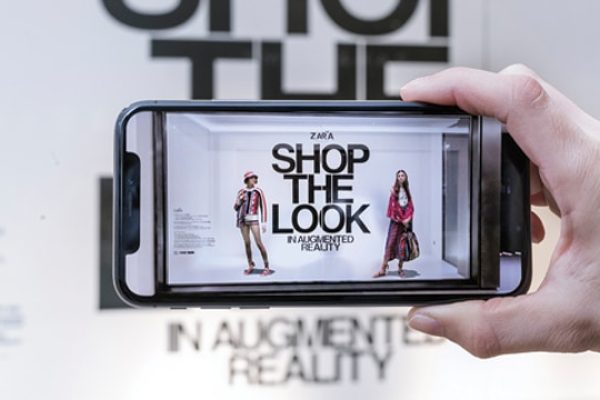

Zara’s augmented reality marketing campaign across 120 retail stores caught eyeballs worldwide as the outlets showcased an empty store window that was usually a place for mannequins. This unique AR campaign aimed at engaging store visitors with an experience like never before.
The empty store window looked bland, but only until viewers opened the Zara Augmented Reality application. The app displayed models Lea Julian and Fran Summers in the open space, delivering a lifelike experience. The models presented the latest studio collection by performing actions like ramp walking, posing, and even holding conversations. This experience made customers highly inquisitive, as the application even allowed viewers to order the visible apparel with a single click! Moreover, like other applications, the Zara augmented reality app also allowed viewers to share the results on social media along with the hologram, making the campaign more accessible.
10. Dent Reality:
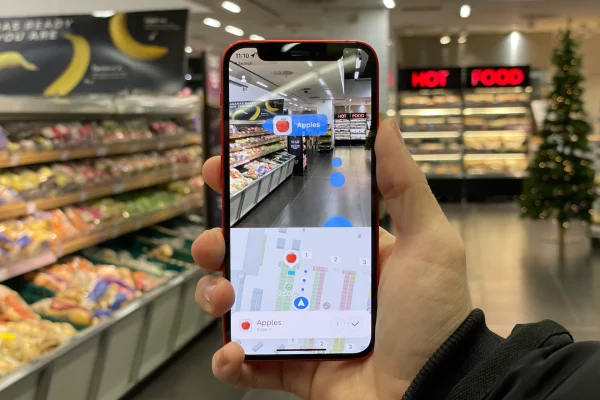

This unique method of assisting customers in shopping malls and stores has caught the attention of various investors. As a result, the London-based startup was able to gather more than $3 million in investments. The application is easy to configure across various grocery stores since the store operators input store data in the application’s database about the locations of different products in different aisles. Dent Reality CEO Andrew Hart has stated that grocery stores are just the beginning and that the application is designed for much more. The reason why the company has chosen grocery stores as a first trial ground is because it wants to test the limitations of this application in the most challenging environment.
Benefits and Future of Augmented Reality Marketing
In recent years, augmented reality has grabbed the attention of brands in both ecommerce as well as the retail sector. With the help of augmented reality, brands are able to provide an in-hand experience to their customers as to how a product would serve their purpose. AR also allows customers to experiment with a wide range of customizations. What makes augmented reality marketing different from conventional marketing techniques is the ability of AR to adapt and serve customer requirements. Augmented reality marketing makes decision making easy, which in turn increases conversion and sales for the brand. Given below is a list of benefits derived through Augmented Reality marketing.
- Better exposure of the brand
Due to its uniqueness, augmented reality marketing is an instant hit when it comes to grabbing attention of the customers. It not only proves to be impactful but also ingrains positivity in the minds of the consumers towards the brand. Augmented reality allows brands to conduct campaigns with a designated purpose to achieve a certain goal. Since augmented reality can be applied to advertisements with little efforts, it has become highly famous due to its simplicity and efficiency. An excellent example of such AR based marketing was the Houston advertising campaign of Nike. Here, the brand enticed people by making them participate in challenges which included jumping and running wearing sneakers from the brand. The augmented arena also allowed the competitors to track their score. Moreover, participants were motivated to share their scores and experiences with the campaign on social media. As a result, Nike was able to reach millions of viewers across the globe by using the combined methods of AR and social media marketing. - Interactive sessions using augmented reality
Brands that operate both online as well as through their offline stores are able to provide their own customized experience to the consumer using mobile applications and the web browser. Very often, brands place a QR code on their products that are put out on display in stores. Customers can easily view all the available offers and discounted prices as well as discount coupons available for that particular product by just scanning the given QR code on their mobile phones. They can even inquire about the different sizes, colors and designs the given product is available in. Thus, augmented reality not only permits personalization but also gives the customer a sense of inclusiveness. - A helping hand
Immersive and user-friendly augmented reality marketing helps brands to promote their product in the most engaging manner. With the ever growing competition, brands which use the most advance tools of marketing bag the highest number of customers. For this very purpose, brands are known to have spent millions on developing highly advanced systems for augmented reality marketing through mobile based applications and the web browser. One of the best examples in this regard is the usage of augmented reality by furniture brands. The conventional method of looking at the picture of a given piece of furniture was not very convenient as the outcome could be a lot different than what was desired by the customer. On the leap side, brands are now able to scan the living spaces of the customers to suggest the best product as well as provide them with a visual idea of the same. This saves the consumer from the tedious process of replacing the product. At the end, the ease with which the customers are able to make their buying decision, makes them loyal to the brand. - Low return/replacement rates
Returns and replacements not only cause inconvenience to the consumer but also affect a business’s goodwill. Here also, augmented reality saves the day by providing the smallest of details about a product or service to the viewer thereby aiding their decision making. Thus, augmented reality helps buyers in making a more confident and reliable purchase which hence reduces returns and replacements.



